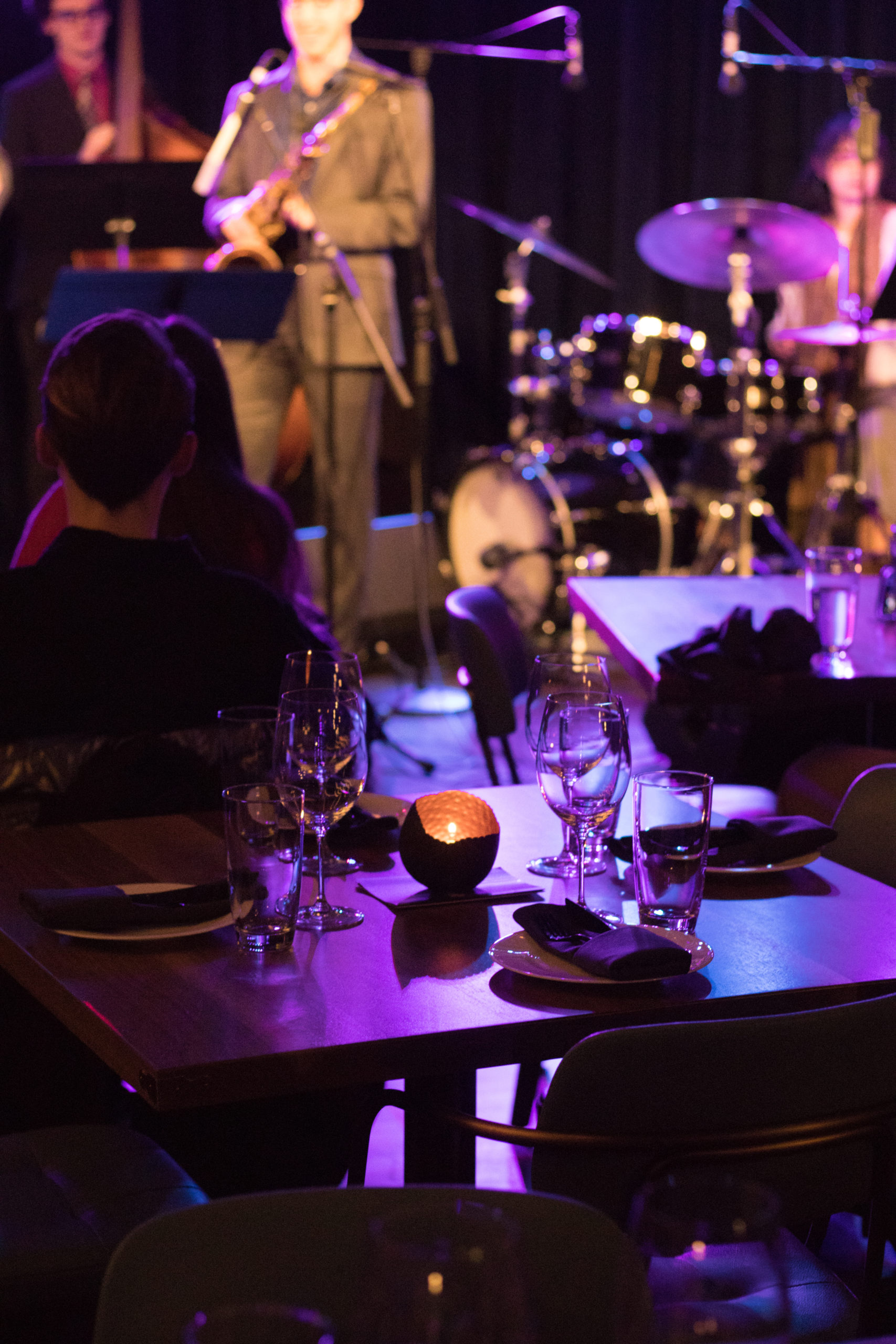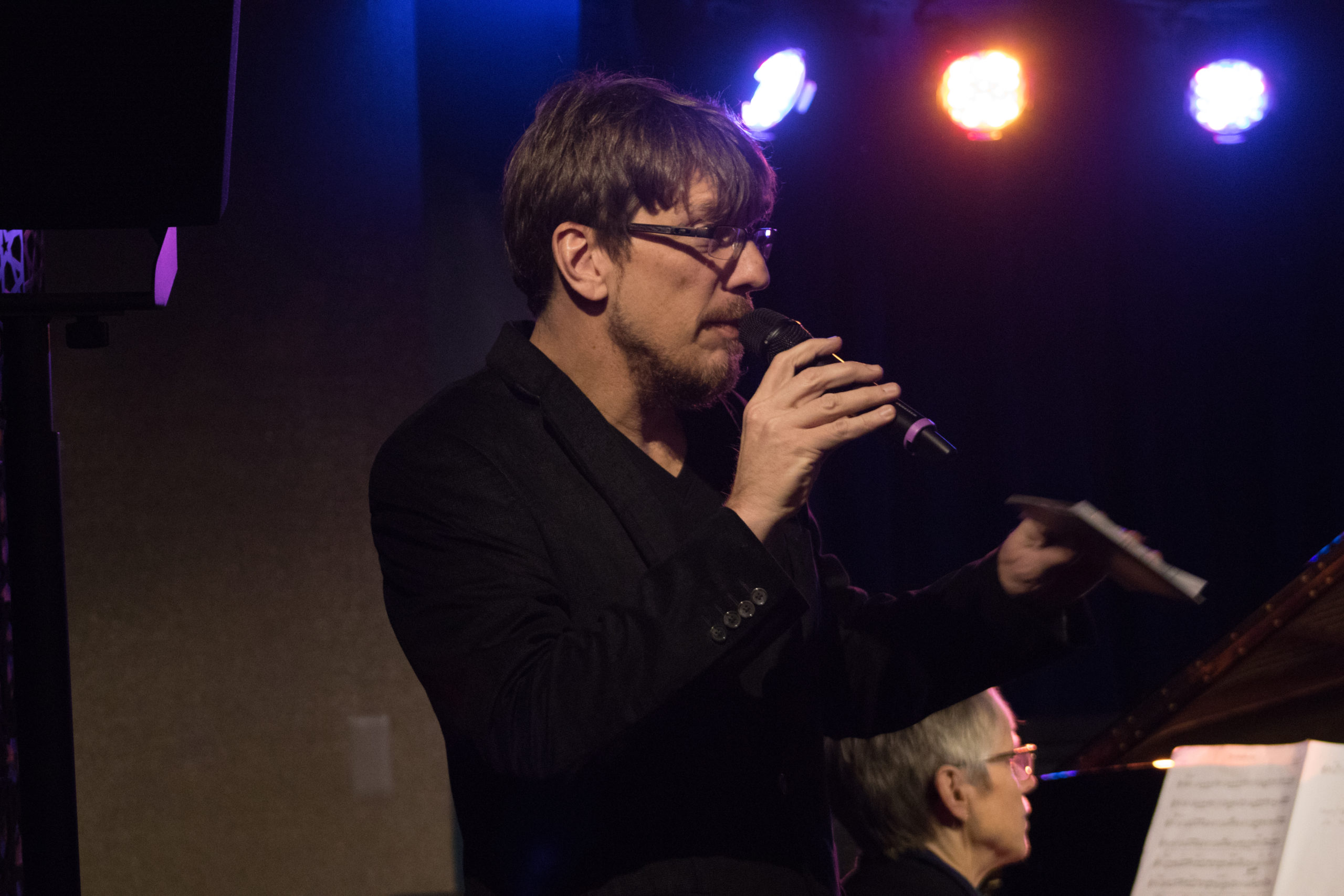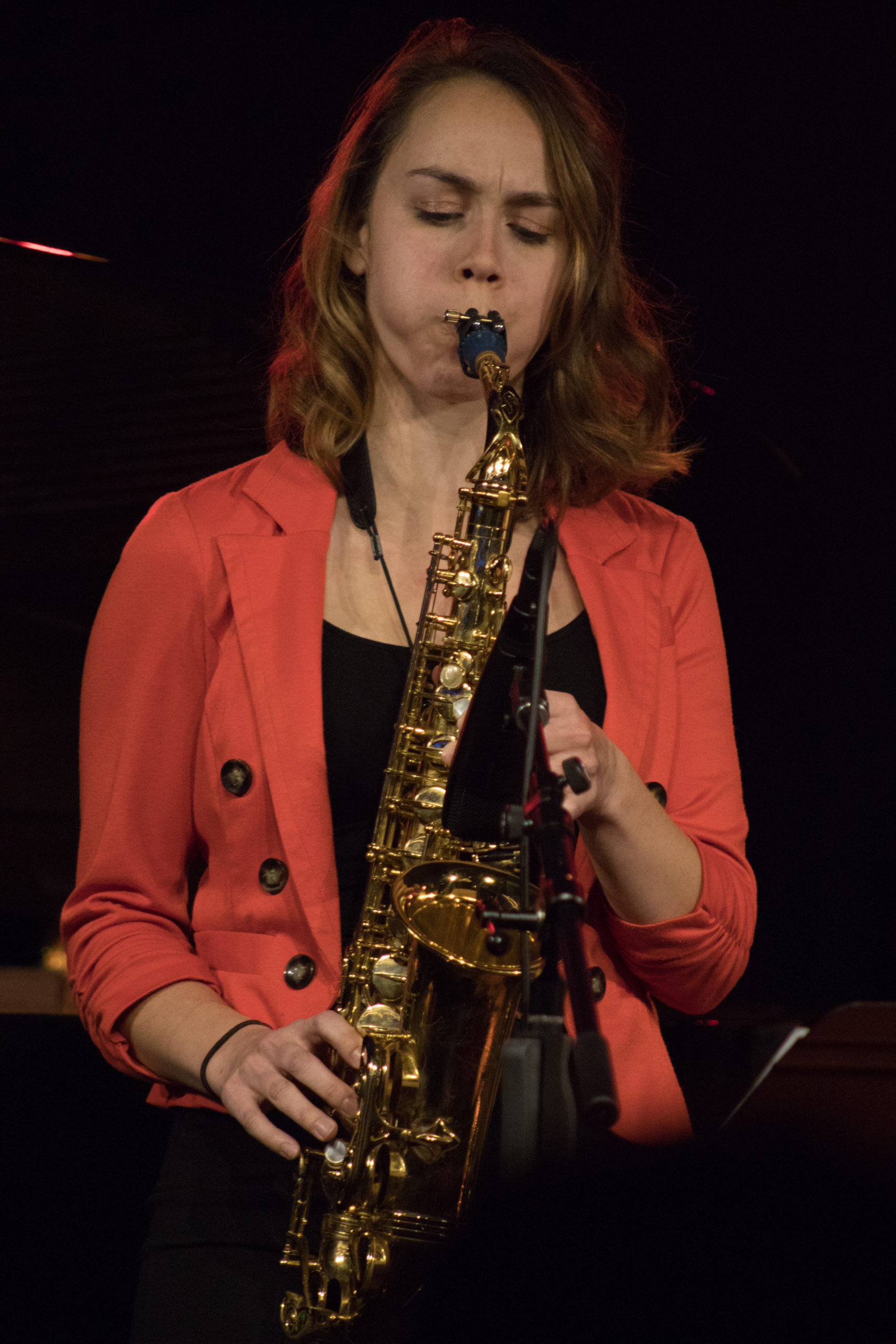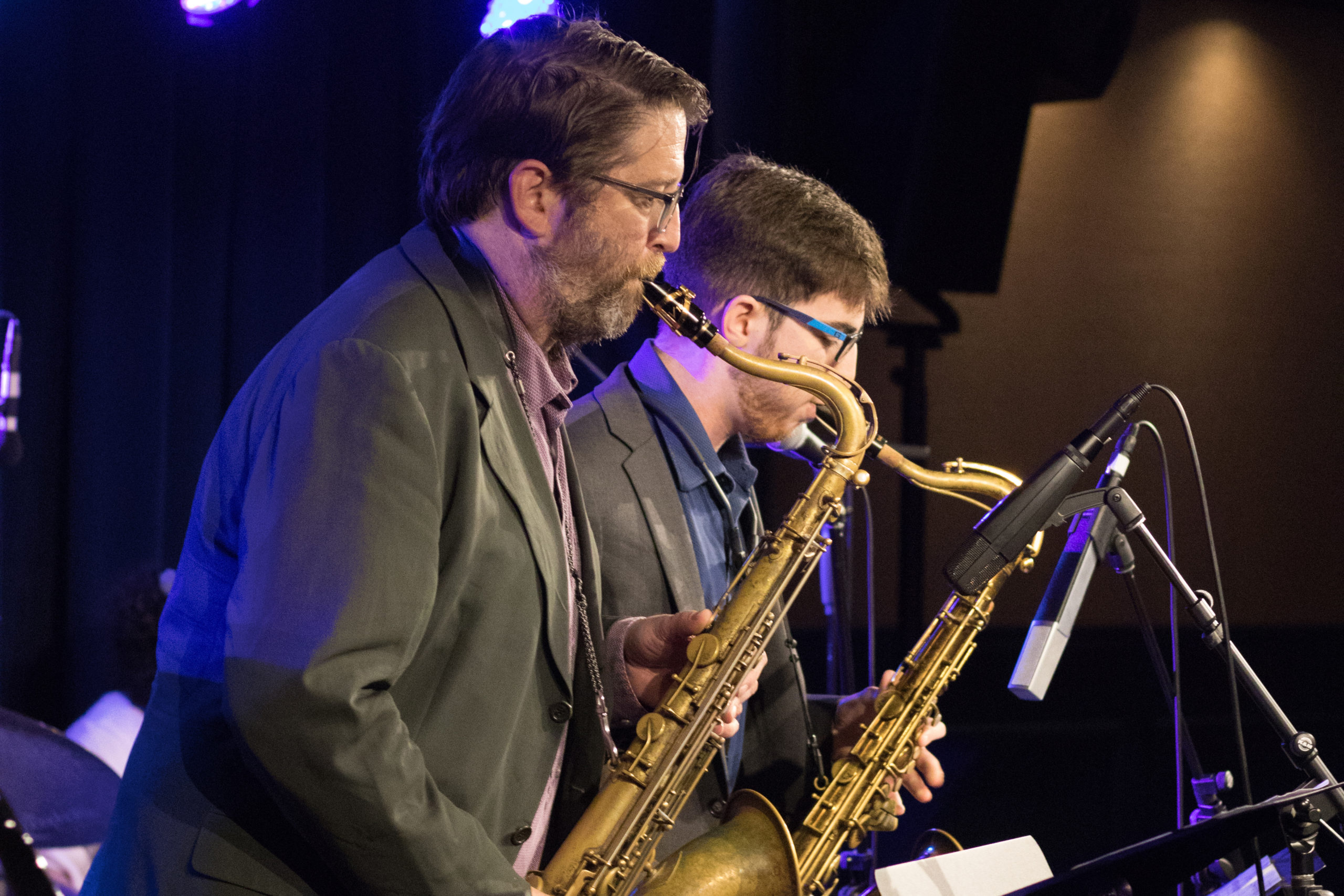By Brandon Monzon, Photos by Muriel Steinke
The Blue LLama Jazz Club is Ann Arbor’s newest venue for live jazz performances and jazz-inspired cuisine—frequently featuring faculty, students, and alumni of the Department of Jazz & Contemporary Improvisation.
The jazz scene in and around Ann Arbor has always been lively. On any night of the week, several local venues and restaurants—including Canterbury House, Kerrytown Concert House, Old Town, and Silvio’s—feature Department of Jazz & Contemporary Improvisation students and faculty on their stages. Since its opening in March 2019, the Blue LLama Jazz Club has become the Department’s newest and most jazz-friendly performance partner.
The Blue LLama is an inviting and intimate space with just over 90 seats—all of which give audience members an unobstructed view of the stage. In concert with the state-of-the-art acoustic design created by Stages Consultants, the same team that conceived of Dizzy’s Club Coca-Cola at Lincoln Center in New York City, executive chef Louis Goral provides a fresh and upscale menu that is inspired by the jazz music emanating from the Blue LLama.
“The jazz scene in Ann Arbor is slowly evolving to provide plentiful opportunities like the Detroit scene,” said recent graduate and vocalist Emma Aboukasm, BFA ’19 (jazz studies). “It’s up to us musicians to create the kinds of gigs and opportunities for ourselves that artistic director and bassist Dave Sharp and owner Don Hicks have done at the Blue LLama. He’s the perfect example of a musician opening his doors to other musicians.”
U-M alumnus Dave Sharp, BA ’91 (philosophy), is the Blue LLama’s artistic director and has been part of the local jazz scene for years as a bassist, bandleader, composer, director of the A2 Jazz Fest, and music educator. That background makes him uniquely connected to musicians gigging in and around Ann Arbor. But it was his prior relationships with musicians from the Jazz Department that helped set the stage for the Department’s partnership with the Blue LLama.
“I’ve known Andrew Bishop, Ellen Rowe, and Marion Hayden for quite some time,” said Sharp, referencing three of the Department’s faculty. Sharp and Bishop collaborated on a series of lunchtime jazz performances at Bach Elementary School in Ann Arbor, and he studied bass with Hayden in the early 2000s. “As artistic director, I’m responsible for organizing the music programming at the Blue LLama Wednesday through Saturday nights and Sundays for brunch. Talking with Professors Bishop and Rowe, I knew the opportunity of presenting their ensembles or inviting their students to perform was an avenue we could explore together.”
Each semester, the Department presents at least five free concerts a semester—both on- and off-campus—not including the myriad student performances that are part of SMTD’s recital seasons.
“The Department is in a unique position as we have a personal connection to Dave,” said Rowe. “It’s very special to our students that the Blue LLama is committed to presenting younger players and hosting jam sessions.”
Since its opening, The Blue LLama has hosted several departmental performances—including a showcase last May, featuring recent graduates, which was organized by Bishop, chair of the Department. The club also presented a Department of Jazz Showcase in November.
“The Blue LLama has been a complete game-changer for the Jazz & Contemporary Improvisation program, as well as the Ann Arbor community at large,” said Bishop. “The club has brought national and worldwide attention to our community and Dave has been one of the greatest champions for Ann Arbor jazz over the last five years. The work he has been doing as artistic director and curator of the Blue LLama has been superb.”
As much as SMTD students have benefited from the Blue LLama, the club has appreciated the backing from the Department.
“The Jazz Department has been very supportive of the club and its mission to provide a lively and artist-friendly jazz venue in downtown Ann Arbor,” said Sharp. “So far, the experience has been satisfying and easy. There are so many talented students and alumni from U-M who have come through these doors.”
A notable highlight of the Department’s partnership with The Blue LLama was this summer’s inaugural U-M Jazz Ambassadors summer intensive—a week-long all-expenses-paid workshop—for up to seven Michigan state high school juniors. The intensive aims to recruit exceptionally talented high school students to study jazz at SMTD and was made possible by a gift from donor and jazz enthusiast Donald S. Chisholm. The intensive is led by Department faculty, as well as a visiting artist recruited to instruct, mentor, and perform with students to support their growth and overall appreciation for jazz. World-renowned double bassist John Clayton was the guest director in 2019. The six days of intensive jazz training included improvisation, theory, rhythm, private lessons, and ensemble coaching, and culminated in a final performance on July 5 at The Blue LLama.
“It was a great opportunity for these talented high school students to be featured in such a professional setting,” said Rowe. “That performance was significant for our program as it featured a group of recent alumni—percussionist David Alvarez Iii, BFA
’17 (jazz studies), guitarist Max Bowen, MM ’19 (improvisation), bassist Brian Juarez, BFA ’19 (jazz studies), and current jazz studies student and saxophonist Kenji Lee—and a closing set by SMTD faculty with John Clayton. It represented three generations of jazz at SMTD—potential prospective students, current jazz faculty, and recent alumni.”
Having a local jazz club like The Blue LLama has given SMTD jazz students a taste of what a career in the field will look like, especially in big cities. “The high-caliber vibe of the club sets students up to succeed at other top-notch clubs in New York or any other major city with a jazz scene,” said Aboukasm.
Rowe notes that there are very few jazz venues in the country that treat musicians with as much regard and respect as The Blue LLama. “Our students have the opportunity to hear top professional artists, including our faculty, and see how they handle themselves on a high-profile gig,” said Rowe. “Just being able to play with working musicians and other U-M students at such a beautiful, professionally run venue is an incredibly important experience in their musical careers.”
Sharp echoes that sentiment. “Our goal is to provide a venue where they can listen to, interact with, and form a community with musicians of all generations who will help their musical growth.”






